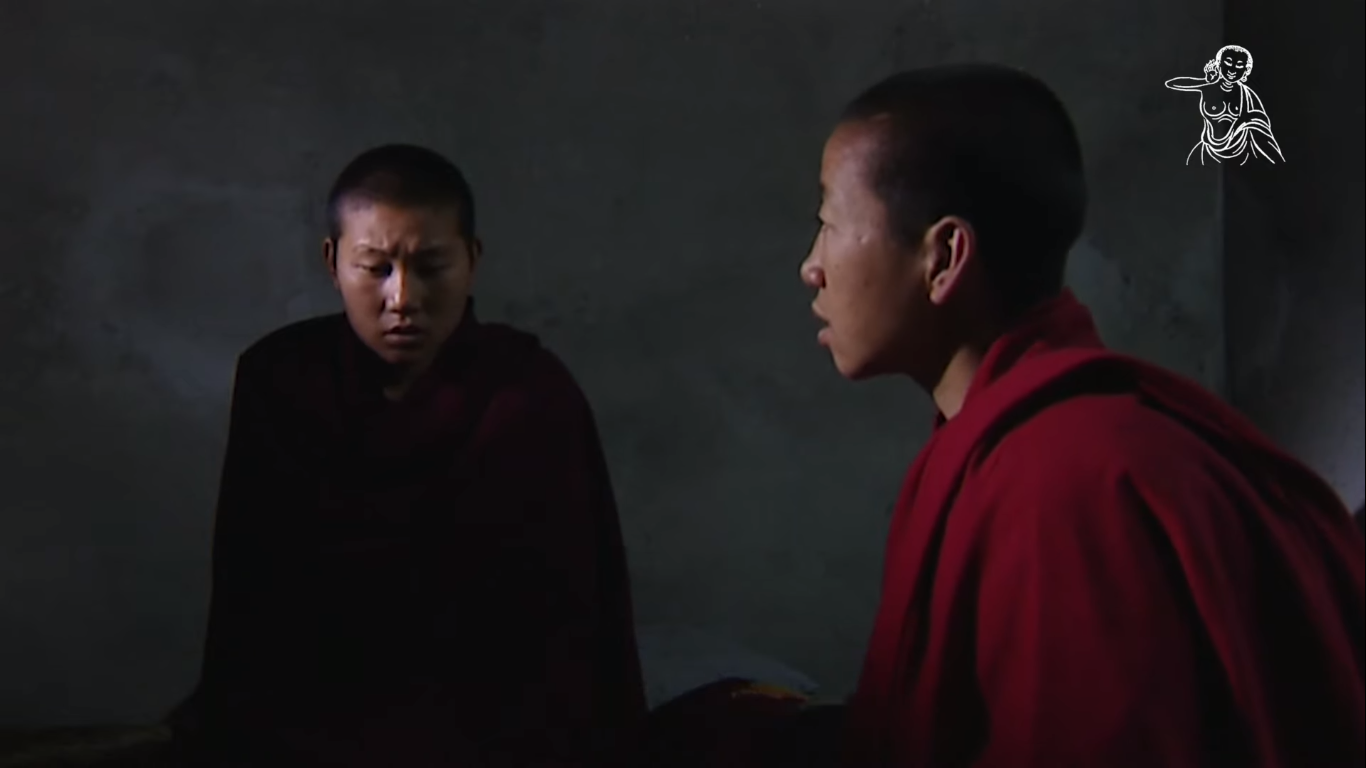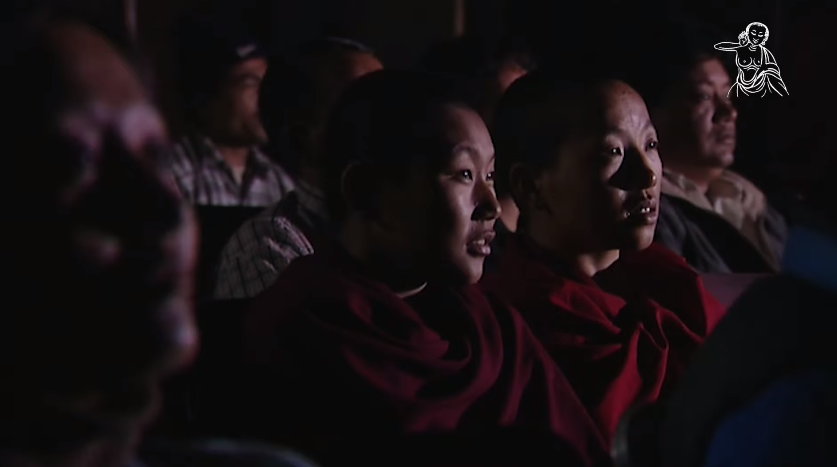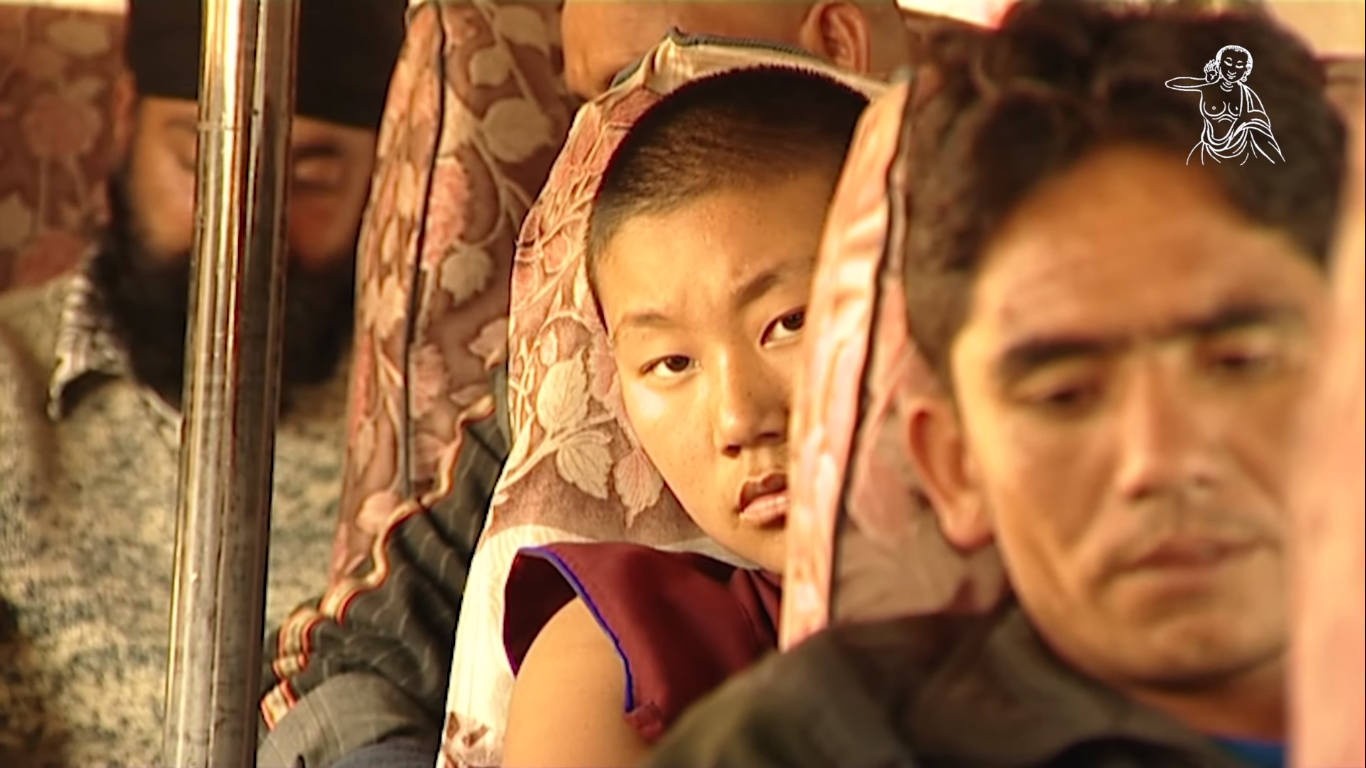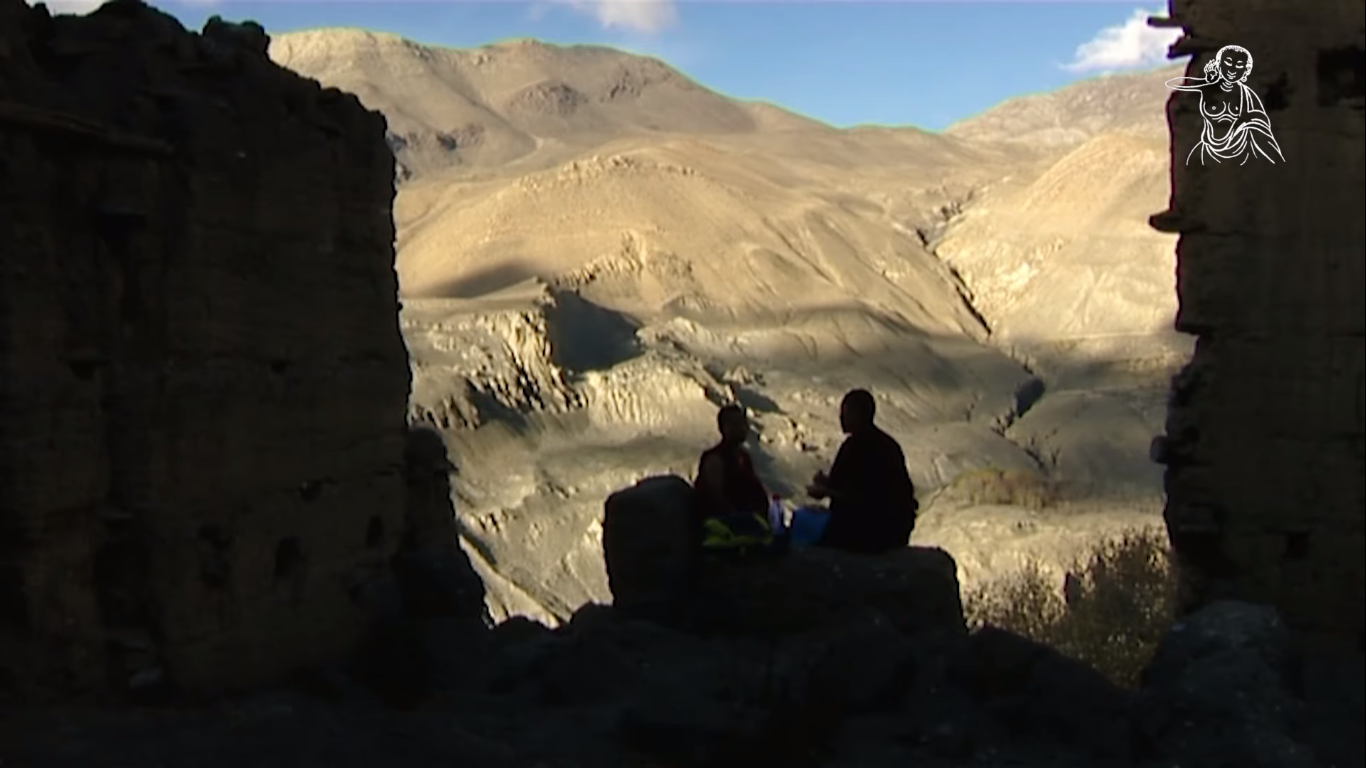Movies
Even after 15 years of its release, Tsering Rhitar Sherpa’s Karma is still impactful
Recently released on YouTube, Karma is a thoughtful film made by a stellar cast and crew, depicting a heartfelt story of a nun from Mustang who goes through a spiritual transformation.
Ankit Khadgi
“I am the guardian of these caves. I have been on guard for centuries,” says Ani Karma in jest to fellow nuns. They are out collecting manure near the sky caves in the desert land of Mustang, and while the others are busy with the chore, Ani Karma is busy teasing them, hiding in the caves.
This is the introduction scene of Tsering Rhitar Sherpa’s Karma, centred around Ani Karma (played by Tsering Dolker), which was released in 2005 and has so far been screened at various film festivals. It was recently uploaded on YouTube.
Since the film was released, a lot has changed for Nepali films—and for the country as well. Nepal has undergone massive political changes, with power shifting from the king to leaders elected by the people. Likewise, the condition of women, people’s access to technology and even Mustang itself, where the movie has been shot, aren’t the same anymore.
However, even after 15 years of its release, the movie is still relevant, which makes the film-watching experience both emotionally and intellectually stimulating.
Based on the short story written by Sherpa himself, with a screenplay written by another prolific filmmaker Kesang Tseten, the plot of the movie is simple yet impactful.
The film revolves around Ani Karma, who is a nun at a gompa in Mustang. At the gompa, the revered abbess has just passed away. The senior nuns of the gompa decide to arrange a large religious ceremony to commemorate her death as well as to celebrate her rebirth, as they believe that she will be born again.
However, the gompa is short of money. It is later revealed that a trader from Jomsom, Tashi, (played by Jampa Kalsang) had taken some loan from the abbess, and so some senior nuns decide to send two nuns, Ani Karma and Ani Sonam (played by Ani Yeshi Lamo), to retrieve the loan so that they can carry out the ceremony.

But the nuns are polar opposite in nature. While Ani Karma is full of energy and is playful, Ani Sonam strictly adheres to a disciplined life. Despite their different natures, they accompany each other and walk to Jomsom from their nunnery, only to find that Tashi isn’t there and no one knows his whereabouts.
The movie then shifts to Pokhara, where the two nuns believe Tashi has gone.
And this is mostly what the film is about: the two nuns on their journey to find this man called Tashi. And while their journey is filled with challenges and uncertainty, as no one knows what he does (however some believe him to be a trafficker) and whether he will return their money or not, there’s a sense of happiness seeing the two nuns navigating their journey.
We see them teasing each other, getting amazed by films, talking about Bollywood actors, getting enchanted by an aeroplane, and even posing like the models they see on hoarding boards. The chemistry between the two characters comes across as very organic. And because of this, all of these moments help us see the two girls as girls and not only nuns.

They are shown as real people with emotions, and this depiction helps viewers forge a real connection with them. The nuns are not only limited to being just nuns who are completely committed to their religious work, a rare depiction we see when it comes to the portrayal of nuns in cinema.
There’s one particular scene in the movie that stands out the most: In Jomsom’s only airport, the two nuns see an aeroplane landing on the runway. Their eyes reflect their excited and amused state of heart, as it's the first time they are seeing an aeroplane.
After they are done watching the plane, they start walking to their destination. In the same scene, we see another plane landing on the runway. This juxtaposition not only stands out aesthetically, but it also underlies much symbolism.
The plane, which is an expensive medium of travelling, carries rich people, who have come to enjoy the beauty of Mustang. Their journey is filled with comfort. However, it's not the same for the locals, like the nuns, who even have to walk for hours on foot to get the basic things.
Going back to the plot: after they reach Pokhara, the two nuns come to know that Tashi isn’t there as well. There, Ani Sonam injures her leg, and as a result, Ani Karma goes to find Tashi in the Capital alone, believing that he has gone there.
The movie changes its location as the plot starts thickening. And this change of locations from mountains to hills and finally to plains is captured beautifully by Ranjan Pandit, who also cleverly changes the frames, as per the location of the movie.

For instance, in the scenes when we see Ani Karma and other nuns in Mustang, the frames are wide, which depicts the vast landscape of the place. However, the frames start getting tight when Karma reaches the city, capturing the city’s congestion. Pandit also uses extreme closeup shots, creating a tense atmosphere; for instance, when the abbess is dying.
But the beauty of the movie lies in its treatment of the characters and the issues it raises in its 1 hours and 44 minutes duration.
The film also touches on many issues, like girl trafficking, caste-based discrimination, and casual racism. However, these issues aren’t on-your-face to manipulate the emotions of the viewers, rather they are dealt with sensitivity, increasing its overall impact.
For instance, there's this scene when Ani Karma reaches a hotel, searching for Tashi, and interacts with the receptionist, who is from a dominant cultural group. Their interaction isn’t that long but it succeeds in depicting the casual racism faced by indigenous groups who are limited to a mere stereotype.
“Mustang ko syau lyaunu bho? (Did you bring apples from Mustang?).” “Dolpo.. Mustang tei ta ho (Both Dolpo and Mustang are the same).” “Tapai haru ko name Tashi, Tshering, Tenzing sabai estai ta huncha (You guys are mostly named as Tashi, Tshering, and Tenzing).” Ani Karma is greeted by such comments by the receptionist and through scenes like these, the makers also incorporate issues faced by her and the community she represents. But such comments do little to affect the strong-minded, positive Ani Karma.
Likewise, she also never fails to present her opinions in front of anyone, and tries to denounce the casteist and sexist structure of society (in one scene she drinks water from a so-called ‘low caste’ family, who have been historically discriminated; in another, we see her giving it back to intrusive men who pass lewd remarks on her.)

Ani Karma is not like the regular type of a character you will find in Nepali cinema. She’s strong, opinionated, but most importantly a human being with emotions, rather than the regular trope predominantly used in Nepali movies, when it comes to representing a female character.
The character of Ani Karma is a focal point of discussion for a feminist reading, as we rarely see female characters portrayed as human beings with emotions, as they are either treated as objects or damsel in distress.
For those who are new to Sherpa’s works, he is one of the most celebrated independent filmmakers of the country. All his works in his filmography, from his debut movie, Mukundo (2000), to Uma (2013) to even the series Singha Durbar (2015)—all of them have featured strong female characters playing the lead role in the narrative and character-driven plots, making his contribution in Nepali cinema a remarkable and a significant one.

At the end of the movie, we see Ani Karma again at a cave. This circle not only completes the plot, but it also conveys a philosophical message of the film.
When we meet Ani Karma in the beginning, she is child-like, innocent, untouched by the realities of the world. Her perception of reality was shaped by her senses and what surrounded her. However, after embarking on the journey to find Tashi, her views about life change as she experiences the real world, beyond her nunnery. This motif, which aligns with Plato's ‘Allegory of Cave’, adds a layer of depth to the movie, reflecting the character arc of its main character.
If you are an avid fan of watching realistic cinema and are in a mood to watch a good Nepali film this week, Karma might be a good option for you.
Movie: Karma
Directed by: Tsering Rhitar Sherpa
Starring: Tsering Dolker, Jampa Kalsang, Ani Yeshi Lhamo
Stars: 3 out of 5




 11.12°C Kathmandu
11.12°C Kathmandu














